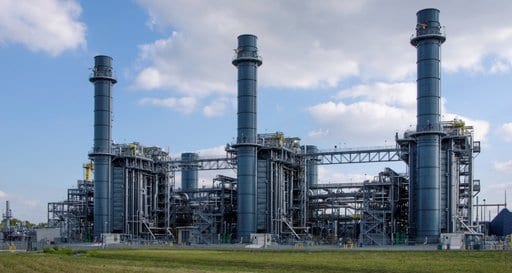Since the mining of gas in the Bass Strait 50 years ago, Australia has had abundant supply of gas. The gas was used to provide heating and hot water to households and businesses, produce electricity and be used in industrial processes.
As new gas reserves were found, and new fracking technology adopted, more gas supply became available, and the Gladstone LNG export terminal was developed so the gas could be sold internationally.
As the Gladstone terminal can export such large amounts of gas, it is a huge change to our market. As a gas demand, Gladstone takes in more than double the amount of the total historical east coast demand for gas. This is shown the in the graph below:

As gas can be sold under long term contracts to overseas buyers for around $11 per Gigajoule (GJ), and it costs $3 per GJ to process our domestic methane into Liquefied Natural Gas at Gladstone, this sees ‘net back’ price of $8 per GJ value for gas sold from Australia to be exported via the LNG export facility.
Historically we had paid $4 per GJ domestically, so this sees a doubling of the wholesale price of gas locally to $8 per GJ.
As pointed out by Clarke (RIP) and Dawes, we no longer have an energy system, we have an energy market. The price is not set by the costs; it is set by supply and demand.
In economic terms, and increase in demand sees an increased price. This is shown by a typical Microeconomics 101 supply and demand graph below:
“P1” shows the original “Price 1” of $4 per GJ. The increase in demand shifts the demand for gas due to the Gladstone LNG facility to the right, therefore price increases to “Price 2” of $8 per GJ.
Many of us in the industry have seen this coming for a while, but now the increased prices are starting to see large consequences. So, we are scrambling for solutions, to save our economy and industry. An obvious one is to produce more gas. In economic terms, increasing supply should bring down prices, as shown in a graph from Microeconomics 101:
The graph above shows that an increase in supply (more gas mining) will reduce the price from “Price 2” of $8 per GJ back down to a lower price of “Price 3”. Microeconomic theory relies on a 100% free market, where the market can respond to price signals in an unrestrained manner.
There are few absolute free markets in Australia or globally, and certainly the Australian East Coast gas market is not one of them. Gas supply is not simply a tap that can be turned up to meet demand. It is restrained by availability of resources, capital costs and time to set up new mines, pipeline infrastructure, industry capability, land rights, social license and many other factors.
But the biggest reasons why the market can’t simply turn up the tap for gas supply are the: scale of the increased demand; and the motivations of the gas suppliers/miners.
The Gladstone LNG facility increases the required gas supply from around 700PJ per annum to nearly 2,000PJ per annum. If it was a 10% increase, market would have likely responded accordingly and microeconomic theory would work.
But a near 200% increase in supply is an increase in investment and resources that cannot be done in a short period, even a few years. Prospecting and investigating new gas resources take time; making investment decisions and building new mines can take even longer.
Secondly, if our gas supply grows and meets this increased supply requirement, there is little to no incentive to keep increasing supply to a point of “oversupply” the price comes down. Even suppliers sitting on resources read to be tapped, are better off withholding supply to maintain new price of $8 per GJ, rather than mining to the point the price comes down.
This is also seen in the property market where developers “land bank” and withhold supply to maintain prices, rather than build-build-build to the point new apartment and home prices come down. For gas suppliers, why sell at $6 per GJ today when you can sell at $8 per GJ tomorrow?
To make matters worse, most of the gas that is ‘cheap’ to extract has been or is being extracted. As this chart shows, increasing supply will see more expensive-to-extract gas be mined, where the supply gas is over $8 per GJ before costs of transport up to Gladstone.

Unfortunately, without severe government intervention, high gas prices are here to stay. More supply will only ensure export demand is met, reduce short term price spikes and possibly bring back some retail competition for customers, but it won’t bring the price down.
And in recent research it is shown that the ‘gas crisis’ and ‘gas shortages’ are unlikely to materialize, even in current market settings.
For large gas users whose businesses are exposed to the increased demand, as well as households, the best bet is investing in efficiency and switching to electricity as much as possible. For our electricity system, we need more (renewable) generation built asap, to transition our gas from quite constant generation to just filling the gaps.
While the ‘crisis’ may be overblown, the price rise is certainly is a shock to our industry and economy. It is important to remember that while the price may have gone up, the costs to mine and supply have not. So this is a boon for gas suppliers. And calls from these suppliers to open up more reserves to bring the price back down are unfounded.













